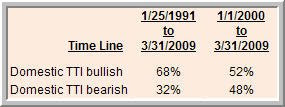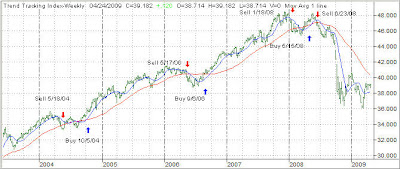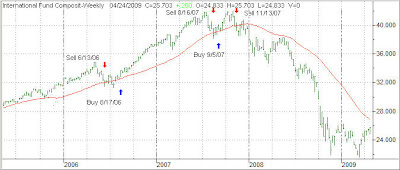 Bill Fleckenstein posted some interesting thoughts in “Thank Uncle Sam for the Rally.” Here are some snippets:
Bill Fleckenstein posted some interesting thoughts in “Thank Uncle Sam for the Rally.” Here are some snippets:
There is nothing like a monumental surge in government stimuli to help boost the markets and, by extension, people’s perceptions of the news.
I’ve been struck by how well the recent stock market rally illustrates an old saw — the market writes the news — because as this powerful rally has built over the past six weeks, enthusiasm has increased with it.
The primary reason for the rally, in my opinion, is the extraordinary amount of liquidity and fiscal stimuli that has been provided by the Federal Reserve and the federal government.
In a recent issue of Grant’s Interest Rate Observer, Jim Grant charted the stimulus money (both monetary policy and government spending) as a percentage of gross domestic product for this downturn, compared with the previous 13 recessions.
In those earlier recessions, if you added all the percentages, the cumulative monetary stimuli constituted about 6 percentage points, while thus far in this recession, the stimuli have clocked in at 18%. Add in the 11.9% (of GDP) supplied by the government and you get 29.9% for the combined stimuli. That’s compared with a total of 39.3 percentage points for the prior 13 recessions.
When the current recession is compared with the Great Depression, we find the relative amount of stimuli is almost four times as high today as during the 1930s collapse, even though GDP has dropped only 1.8% versus 27% back then.
Given the massive stimulus efforts, one must be leery about the conclusions one draws concerning what this rally might mean.
This rally could indicate that times are getting better — or just that massive liquidity is leaking into the stock market and that the real economy is going to see more inflation.
…
The patience required in investing is not so much the patience for sitting with a position after you establish it but the willingness to be patient beforehand.
To quote my friend Jack McHugh (using a Texas Hold ‘Em analogy): “Waiting for more information allows a patient gambler to better know when to commit his or her chips. . . . There’s always another hand to be played, just as there will always be a new set of investment opportunities to consider.”
I agree. And I will continue to wait for opportunities where I believe the risk-reward ratio is really in my favor and I am able to muster up some conviction.
[My emphasis]
This pretty much reflects what I have been saying. It is important that you as an investor have a plan in place and part of that plan is to wait for opportunities to present themselves. This is opposite to what most people do by feeling the overwhelming need to “do something.”
Using our hedge strategy has allowed us to move into the market earlier than our conventional trading rules call for. However, patience by waiting for the right moment to execute is just as critical with hedging as it is when establishing outright long or short positions.
Missing out on an opportunity is far better for your portfolio value than pressing the issue by forcing yourself into some positions too early and then watching the market prove you wrong.





